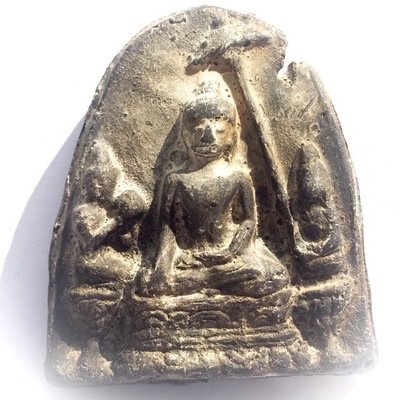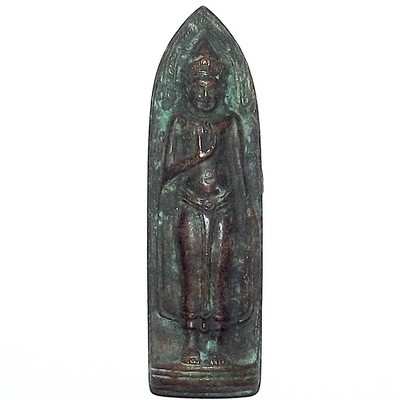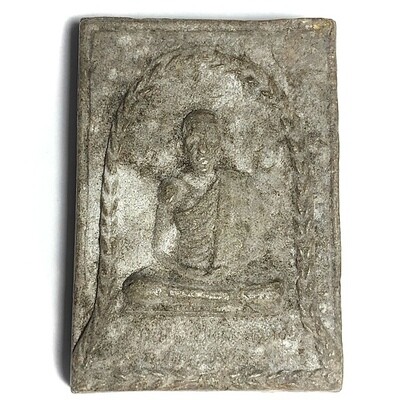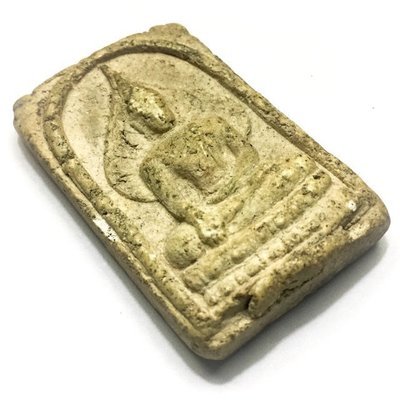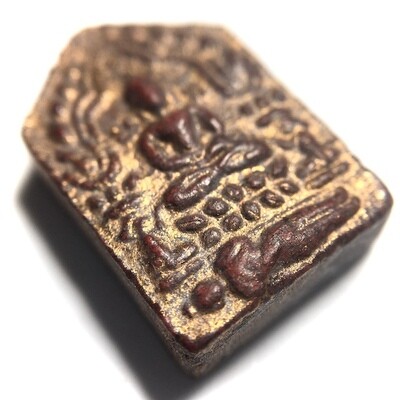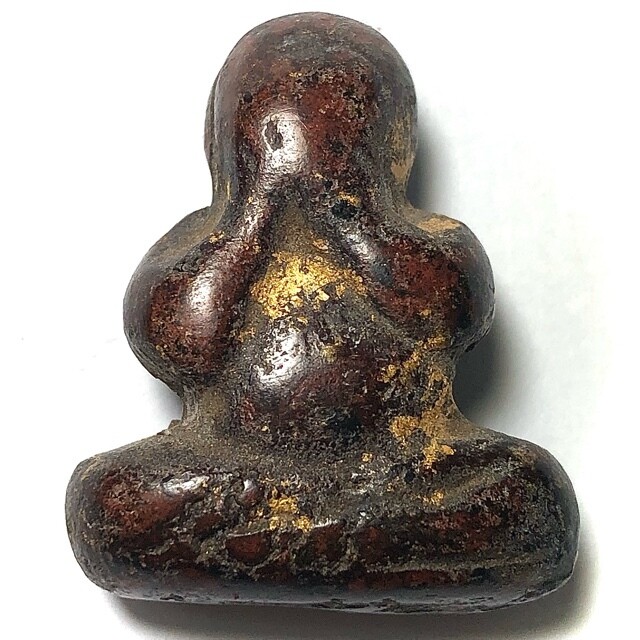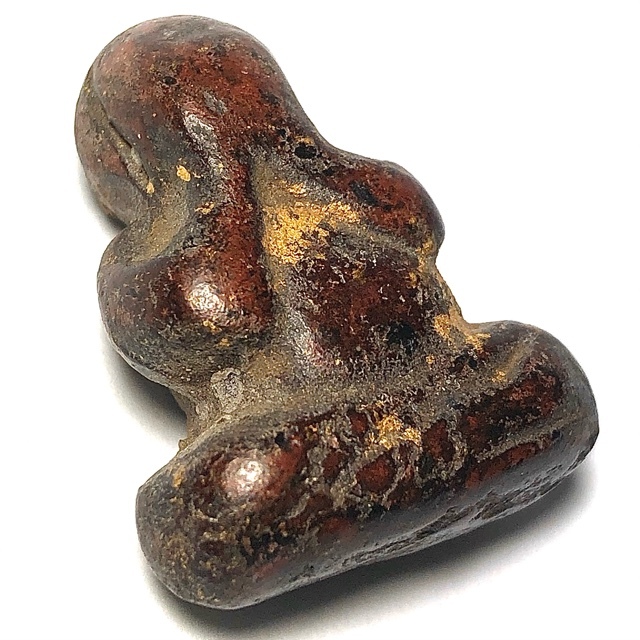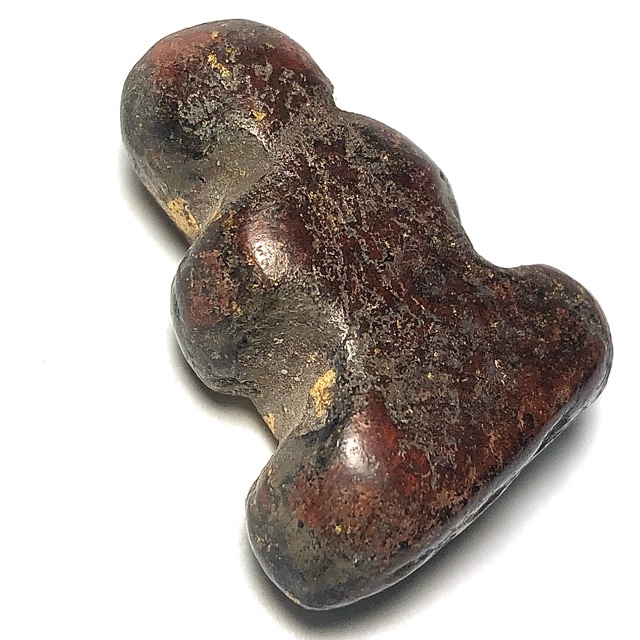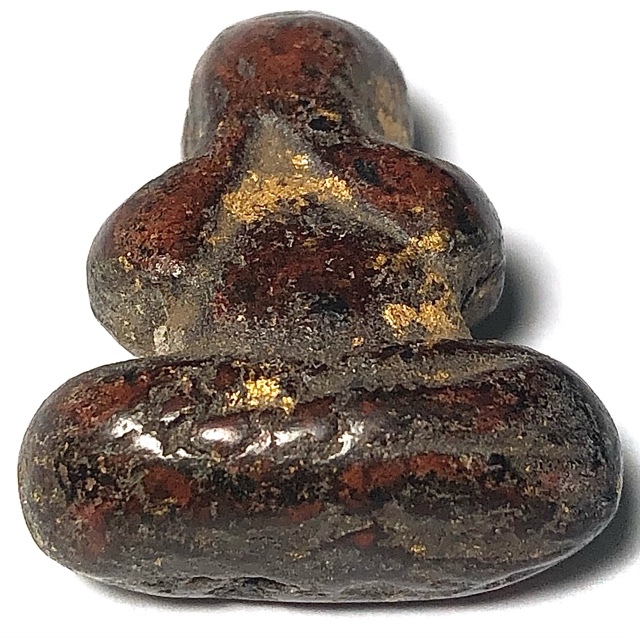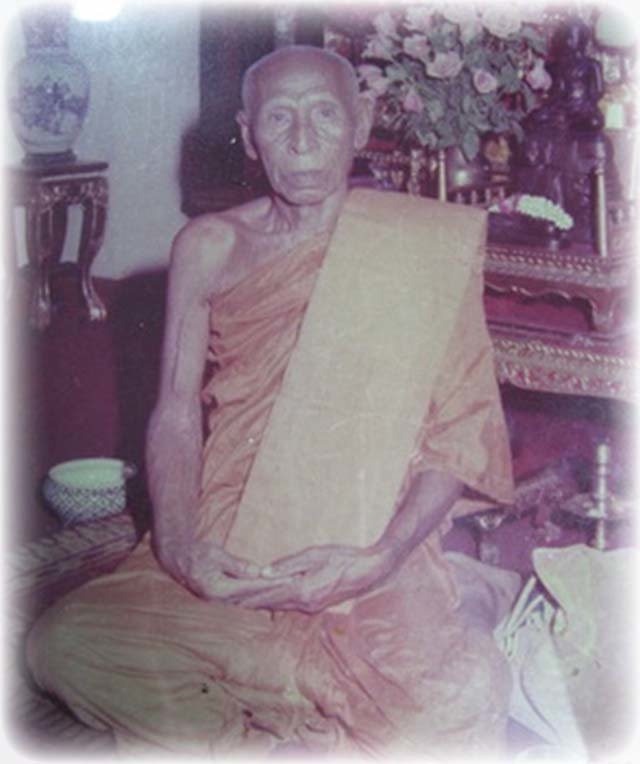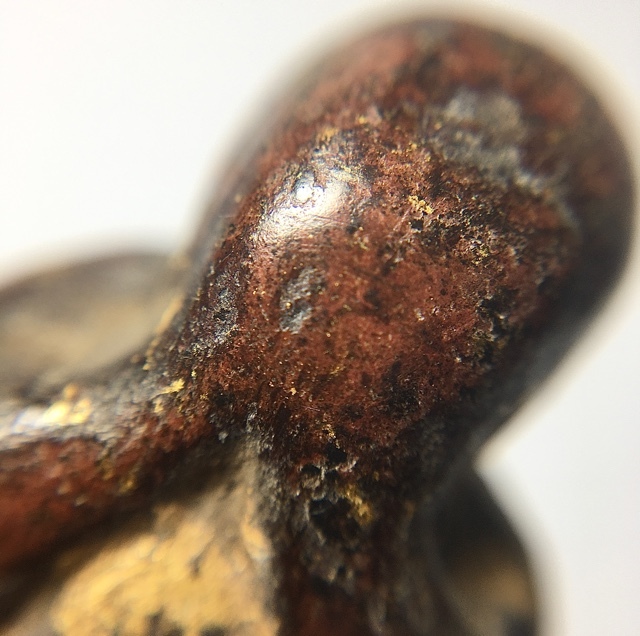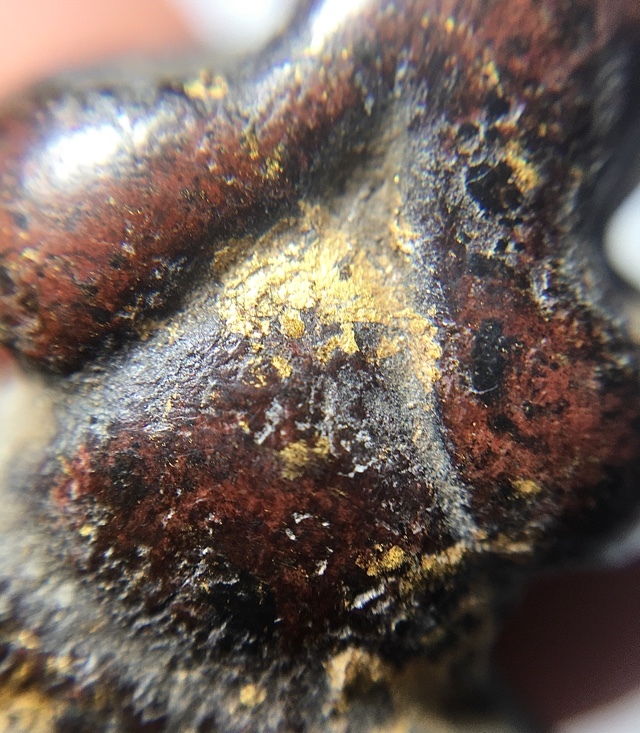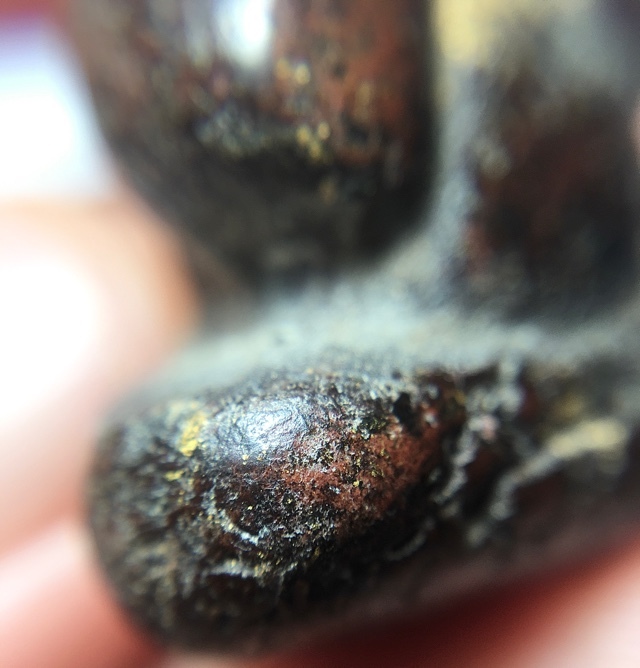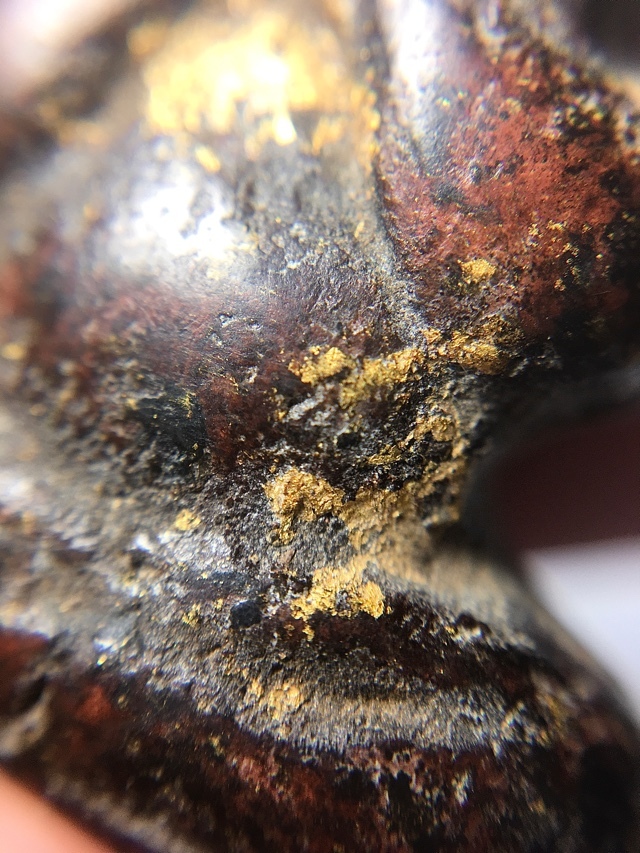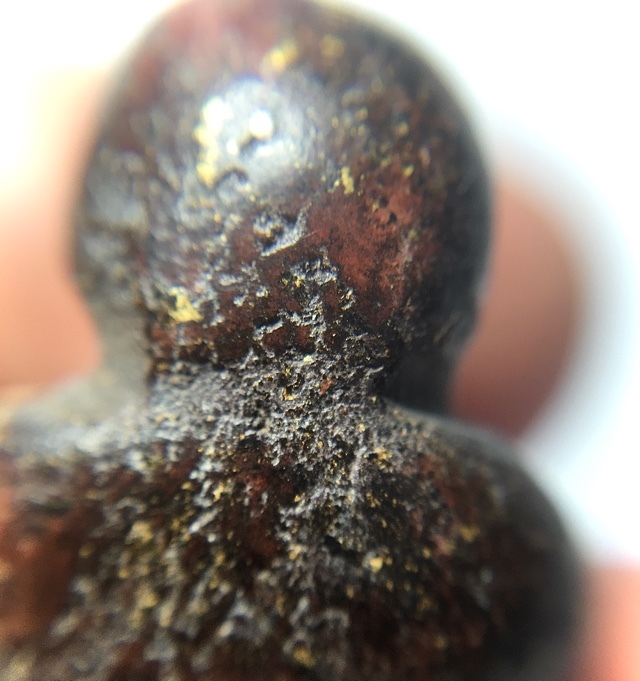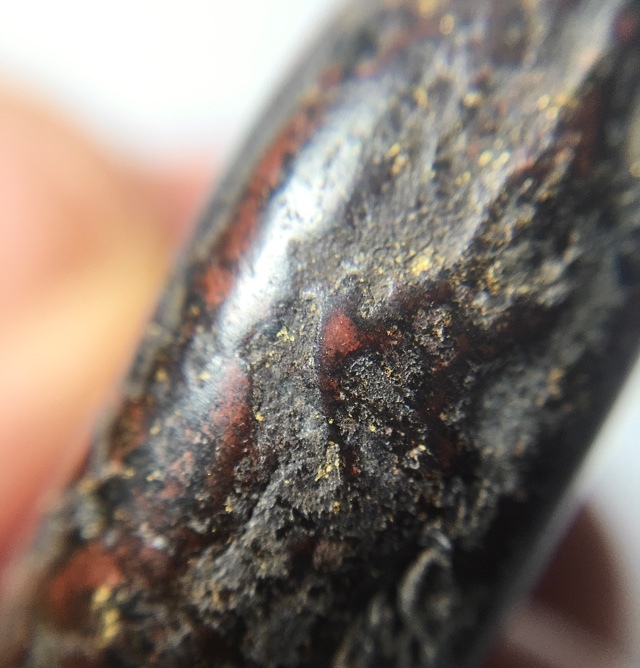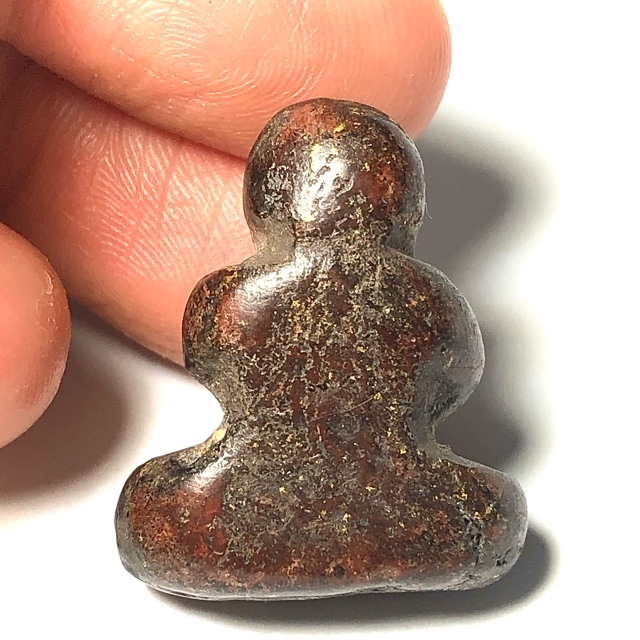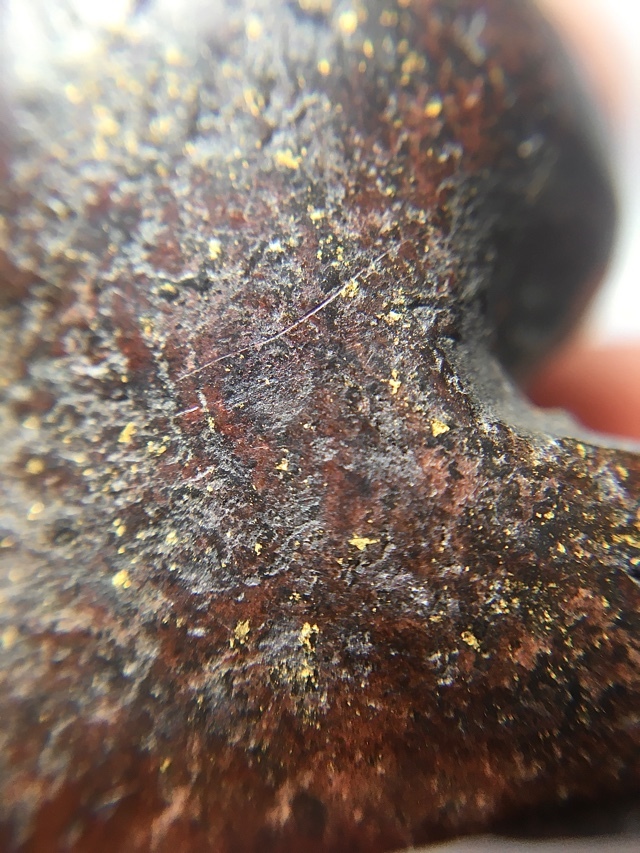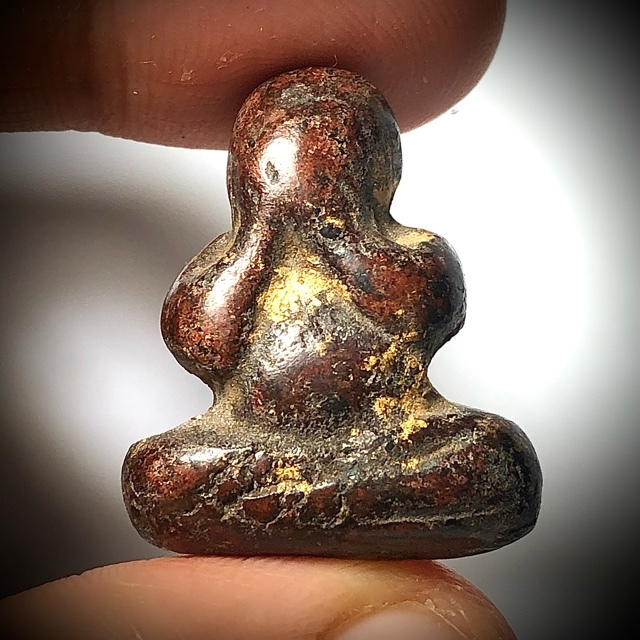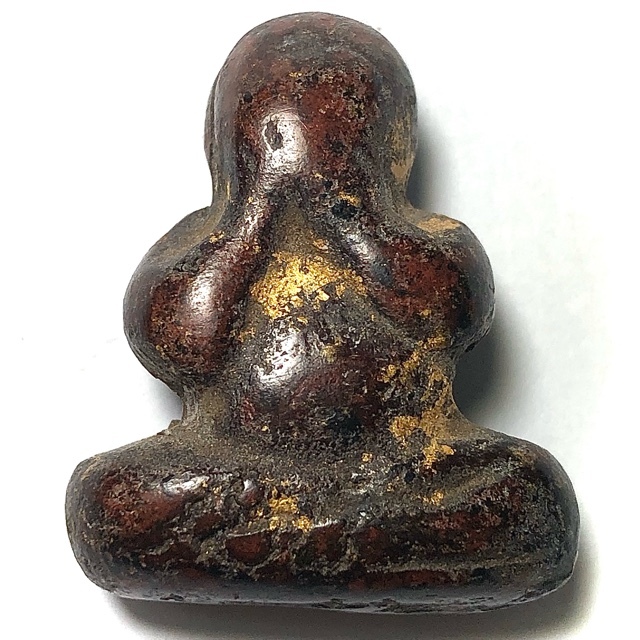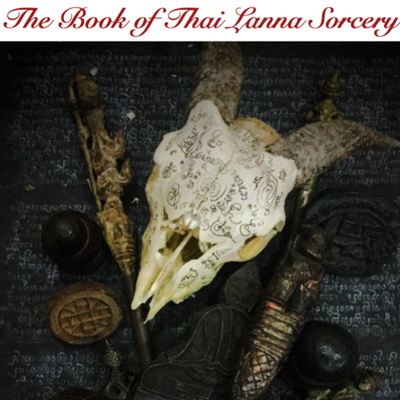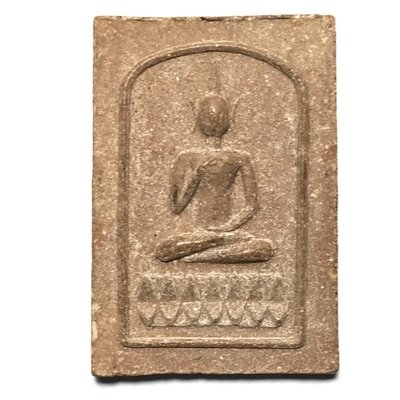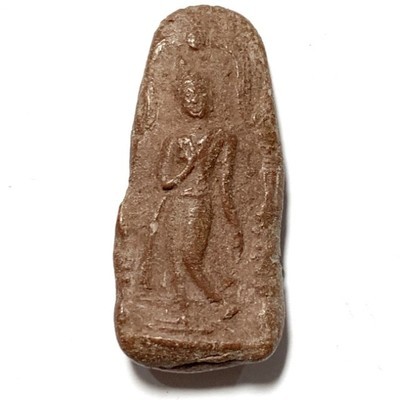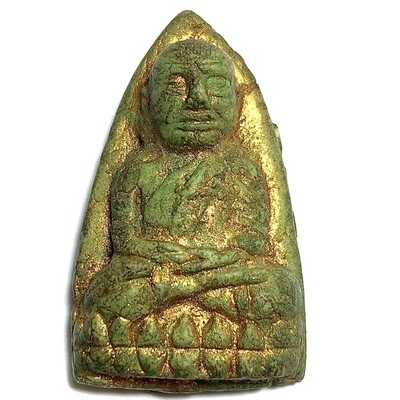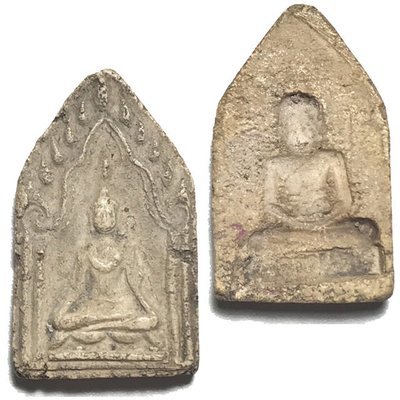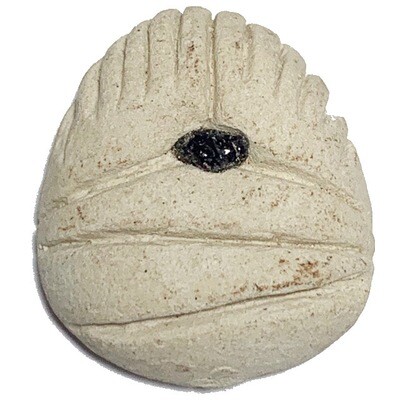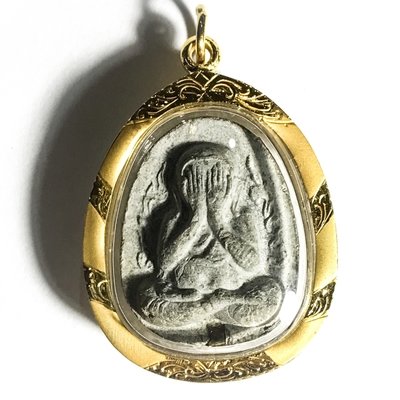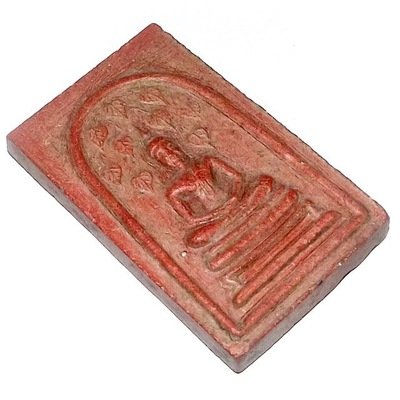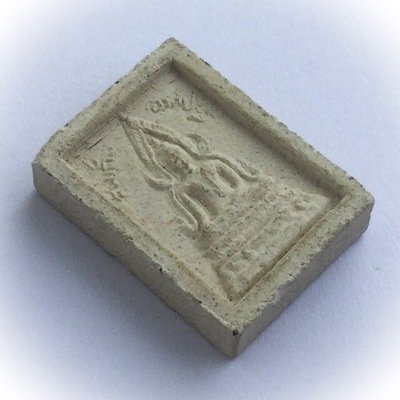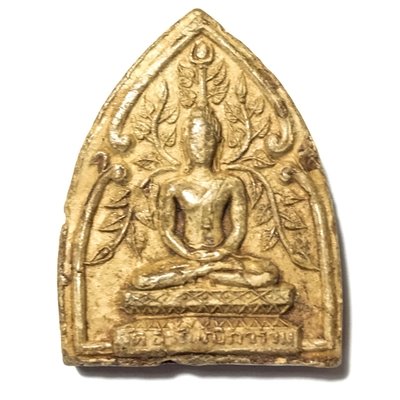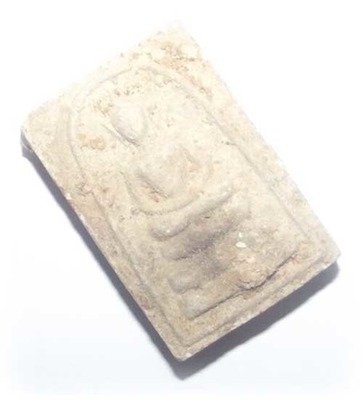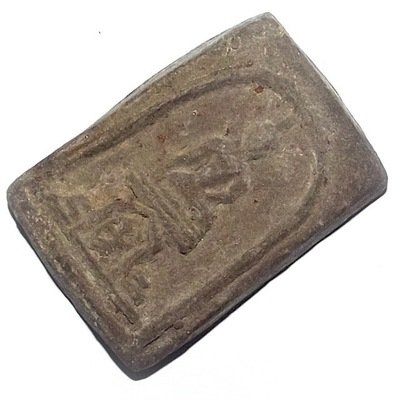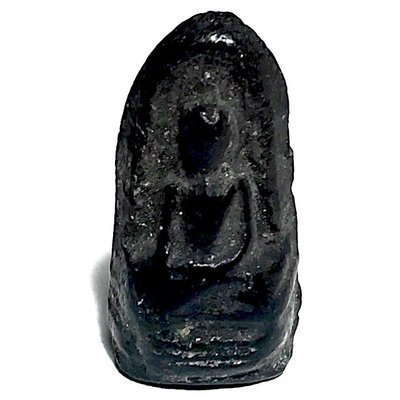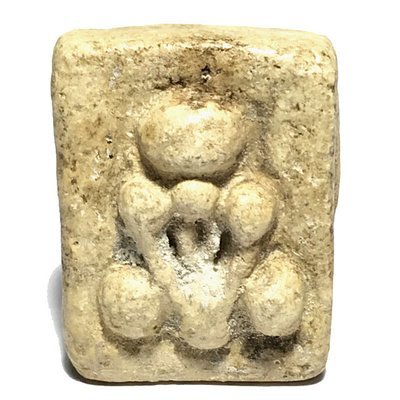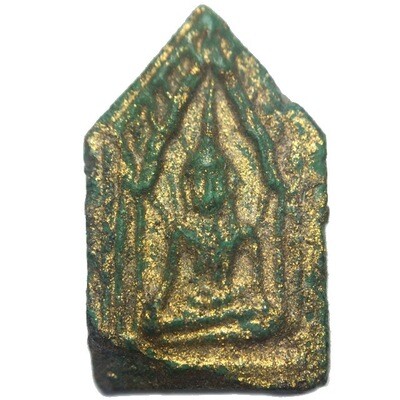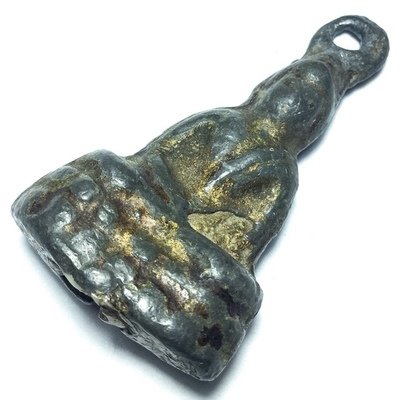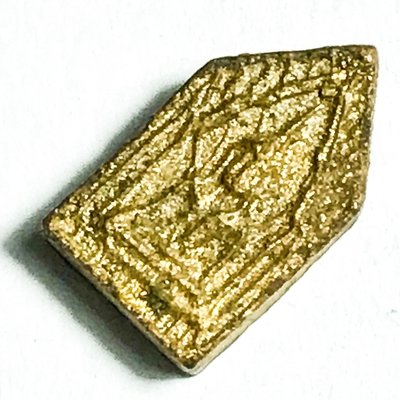A pristinely kept and extremely rare Rian Mangorn Koo Nuea Nava Loha Pim Pised Dtok Sorng Code Ma Wat Pha Nong Lom Run Sao Ha Maha Sethee 5th Lunar Saturday Blessing Ceremony Edition Guru Monk Coin, released in 2543 BE, to raise funds for the Kuti Songk Monks Huts and improve the facilities at the temple of Wat Pha Nong Lom.
This model of Rian Mangorn Koo twin dragons Monk Coin is a very rare Pim Pised (Niyom preferred) and differs from the majority of Rian Mangorn Koo Wat Pha Nong Lom Edition coins in Nava Loha, because of the double code MA stamp. Most coins of the Nava Loha series made for Wat Pha Nong Lom have only a single code Ma Stamp (on the Sangkati chest sash of the robe of Luang Phu), and only the Pim Pised special models received double code stamps. Only very few (unknown number) were distributed with double code stamp, making this not only a sacred, powerful master class amulet, but also a rare collectors piece.
The Rian Mangorn Koo of Luang Phu Hmun is, as are all of his amulets, known for the power of Jaroen Lap Wealth Increasement, and Lucky Fortunes, as well as for their Miraculous Protective Powers. Those born in the year of the dragon love to Bucha this amulet especially, for the obvious reason of the double dragon guardians.
For those with lower budgets, who seek power above collectability and rarity, we recommend to seek the Rian Mangorn Nuea Tong Daeng or Nava Loha single Code Ma, of the same edition, which carries a lower price than this special Nava Loha Pim Pised Gammagarn double code collectors edition model.
Pra Pid Ta Nuea Pong Kluk Rak Pim Tapap Luang Por Tong Sukh Wat Sapan Sung 2495 BE
The all time classic Pra Pid Ta Pim Tapap 'Terrapin Buddha' Muan Sarn Sacred Powder amulet of Luang Por Tong Sukh. Made using Sacred Yantra Powders, and mixed together with red ancient Chinese herbal lacquer (Kluk Rak Jeen Boran), in most cases, the amulets were made from purely powder, and 'Jum Rak' lacquer dipped, whereas some exhibits as this Pid Ta, were mixed with lacquer when making the clay admixture. An eternal favorite of devotees around the world, from Luang Por Tong Sukh of Wat Sapan Sung
The Pra Pid Ta Wat of Sapan Sung Temple, is a Dtamra (legendary series) that spans over various generations of abbots, all of whom have managed to gain equal fame and high repute for their Pra Pid Ta amulets, all of which preserve the style and methods of the original Wicha made so famous by Luang Phu Iam. All editions of Pra Pid Ta Wat Sapan Sung are highly sought after. and seen as preferred Master Class category amulets (Pra Niyom), regardless from which Master they came from.
The Pra Pid Ta of Wat Sapan Sung is known in two major Pim (models), namely the Pim Chalud (Blind Man model), and this Pim Dtapap (Terrapin model). Mostly the amulets would be covered in Lacquer, with some very few exhibits in pure powders.
Free Shipping Worldwide is offered, along with the option of free Waterproof Casing if desired. Although most Pra Pid Ta Wat Sapan Sung are lacquered, others can be found to have had the lacquer cleaned off them by devotees in later years. It is also known that Luang Phu Glin, one of the Great Masters of the Wicha Pra Pid Ta Wat Sapan Sung, was allergic to Lacquer, and so his versions hardly ever had lacqer on them and were pure powders, except for when his devotees assisted to apply the lacquer for him. Luang Por Tong Sukh and Luang Phu Iam however, would more often than not, dip the Pra Pid Ta in lacquer, as a protective layer. And as already stated, some models were made by mixing the lacquer in with the powders along with prayer water, to make the wet clay for pressing into the molds, resulting in the 'Kluk Rak, exhibits, having a differing effect to the 'Jum Rak' models
All masters have followed the more or less the same design and method of lacquering, resulting in the amulets of each master being very similar in design, and mostly can only be differentiated by estimation of the age of the lacquer and Muan Sarn Sacred Powders in order to determine which Generation of Master the amulet came from.
Luang Por Tong Sukh Intasaro (Pra Kroo Nantagij Sope), was the abbot of Wat Sapan Sung during the years 2491 BE to 2525 BE, after Luang Phu Glin, and Luang Phu Iam. Much like his predecessors, he continued to preserve and nurture the Wicha Pra Pid Ta already made famous from this Temple by the great Luang Phu Iam, and Luang Phu Glin, and produced his own editions, using the Wicha bestowed upon him from his Kroo Ba Ajarn before him.
Luang Por Tong Sukh, was born on the 11th March 2446 BE in the village of Nong Phai Hlueang in Petchburi and was the son of Mr. Kong and Mrs. Pae, and was the youngest of 5 siblings. At age 11, he went to be educated at the temple of Wat Nong Wa in Petchburi, with Pra Ajarn Joy, Ajarn Say, and Ajarn Nim. When he reached age 13, he left with his uncle to help work to assist his family, and moved to work in Rachaburi.
Below : Luang Por Tong Sukh of Wat Sapan Sung
At age 20, he was called into the military service with the Infantry in Petchburi. After he finished his military service, he applied for a job in the Police force, and was employed as a Police Lieutenant in Petchburi for two years. After this, he was sent to work in the Southern Province of Naratiwat, and later to other Porvinces like Satun, Ban Pong, Rachaburi, Chayapum and Surin. He was eventually sent back to work in Petchburi, and after one single year working there, he began to develop immense boredom with the ways of the world, and left the Police force.
He ordained into the Sangha in the year 2470 at Wat Na Prohm in Petchburi. Pra Kroo Pit (Abbot) was his Upachaya Ordaining Officer, and Pra Ajarn Phong was his Gammawajajarn Prompt, and Pra Ajarn Up was his Anusawanajarn Witness. He stayed at Wat Nong Wa for one year, and then Pra Ajarn Peng of Wat Sapan Sung who passed by traveling on Tudong, invited him to join him to go stay at Wat Ta Gwian in Pak Kred in Nontaburi. Luang Por Tong Sukh stayed here for three years and then moved on to go study Pariyatti Dhamma at Wat Sapan Sung in the year 2474 BE.
At that time Pra Kroo Sopana Sasanagij (Luang Phu Glin) was the abbot, and his friend Ajarn Peng was the Pariyatti Dhamma teacher. In the year 2476 BE, Luang Phu Sukh gained his Doctorate in Dhamma studies, and Luang Phu Glin gave him the job of teaching Pariyatti Dhamma instead of Luang Por Peng.
Luang Por Tong Sukh then at this time began to study and practice the Dtamra Saiyawaet Grimoire of Buddha Magic and Occult Sorcery, and the various Kata which were pertinent to the Wicha of the Temple and Masters of Wat Sapan Sung, such as the Inscriptions for Takrut, the methods of making Pong Lob Yantra Powders, the Wicha of making Pra Pid Ta amulets, and Holy Water. He received all of these Wicha and Ritual methods from Luang Phu Glin, then the Abbot and Guardian Sentinel of the Wicha, passed down from Luang Phu Iam.
In the year 2482 BE, Luang Phu Glin passed away, and Luang Por Tong Sukh was given the emergency status of temporary Abbot until 2490 BE, after which he was officially instated by the Sangha Comittee as Abbot with full documentation and Royal decree. He performed his duties and continued the work of Luang Phu Iam and Luang Phu Glin, and was now the new Master and Guardian of the Wicha Pra Pid Ta Wat Sapan Sung, as the third important master of the lineage Wicha. In the year 2508 he was awarded status of Upachaya.
Luang Por Tong Sukh administrated the temple with great prowess, and brought many improvements to the enclave, and saw to the needs of the devotees. His kindness and strength of practice was legendary with the local devotees, for his strict adherence to the Dhamma Vinaya Buddhist Canon, and maintaining his purity as a Buddhist Monk.
His guidance to the younger Samanera novice monks was excellent, which led to the temple having only well practiced Monks residing, which brought even more reverence from the local community of devotees, for the temple was seen as a true place of practice, with only pure monks residing. Luang Por Tong Sukh guided the fold and took care of the temple and its Bhikkhus with complete self renunciation for many years, serving the congregation, until he passed away on the 7th April 2525 BE at 8:00 am, at the age of 79 Years Old.
Luang Por Tong Sukh made the Pra Pid Ta Wat Sapan Sung throughout his trajectory, for devotees would come in throngs every day to seek out amulets, and so one can find Pra Pid Ta of this master coming from a range of time periods, ranging between about 2490 BE, up to his passing in 2525 BE, spanning a period of over 35 Years of amulet making.
His early era amulets will hence have similar appearance in ageing characteristics as those amulets from the latter Era of his Mentor Luang Phu Glin. It is hence a point of study to recognise the ageing characteristics of the Muan Sarn Sacred Powders and Lacquers of the Pra Pid Ta Wat sapan Sung amulets, to separate a late Era Luang Phu Iam amulet from an early Era Luang Phu Glin, and a late Era Luang Phu Glin amulet from an early Era Luang Por Tong Sukh. To master this aspect of amulet study of the Pra Pid Ta Wat sapan Sung, is to Master the Dtamra of amulets of three Generations of Masters in its entirety.
Luang Por Tong Sukh's amulets are manyfold, ranging from his famous Pra Pid Ta, to Rian Kanajarn Monk Coins, and many talismanic charms such as Takrut, Look Om, and Pha Yant. Amongst his most preferred amulets are of course the Pra Pid Ta, and the Roop Lor Luang Phu Iam, and Roop Lor Luang Phu Glin Loi Ongk Statuettes (released in 2500 BE). Other preferred amulets are the Rian Sema Block Ueam, the Rian Luang Phu Glin, and Rian Khaw Hlam Dtad, as well as various other Rian Sema type coins. Some of his amulets can fetch thousands and even tens of thousands of dollars for rare preferred block presses.
The Pra Pid Ta of Luang Por Tong Sukh is a very poreferred and popular amulet, for its undisputed powers, which have been repeatedly confirmed over the years with so many stories in the newspapers about miraculous events happening to devotees who wore the Pra Pid Ta Wat Sapan Sung of Luang Por Tong Sukh. Luang Por Tong Sukh made the Pra Pid Ta exactly as passed down to him by Luang Phu Glin and his predecessor Luang Phu Iam.
Below; Luang Phu Glin, of Wat Sapan Sung
It is said that the Pra Pid Ta of Luang Por Tong Sukh is just as powerful and can be used instead of Pra Pid Ta by Luang Phu Glin or Luang Phu Iam, and the amulets of all three Masters are collected with equal fervency and preference by devotees, the only difference between the amulets of these three masters being the age and the price. Luang Por Tong Sukh would use old powders which were passed down from Luang Phu Gling, which Luang Phu Glin in turn had received from Luang Phu Iam.
It is said that Luang Por Tong Sukh made amulets from about the year 2490 BE onwards. Both the Pim Chalud and the Pim Tapap models are very highly revered and sought after, with his most preferred and rarest models being the Pim Sader Jun, Sader Bum,, and the Pim Sorng Sader (2 belly buttons), and the Pim Tapap (Terrapin Model).
The Pim Sader Jun is very rare, made in the year 2495 BE, and fetches very high prices on the marketplace, starting at about 1000$ and upwards. However, it is a fallicy that the Pim Sader Jun was only pressed in 2495 BE, as Luang Por Tong Sukh kept pressing the Sader Jun amulets with the very same block press until it broke sometime between the years 2510 BE and 2520 BE. The Pim sader Jun and Pim Sorng Sader remain his rarest and most highly valued models, fetching extremely high prices with collectors.
The Pra Pid Ta Wat Sapan Sung are highly renowned for their powers of Maha Pokasap Metta Maha Niyom Klaew Klaad Kong Grapan Chadtri, to bring great wealth and protection to the wearer.
Kata Pra Kawambadee
(This kata is for increasing ones wealth and belongings and good fortune);
Namo Puttassa Kawambadtissa
Namo Tammassa Kawambadtissa
Namo Sangkassa Kawambadtissa
Sukha Sukha Warang Na Mo Puttaaya Ma A U
Tugkhang Anijjang Anatta Jewa Segkhaa Tammaa Yataa Put Mo Na

